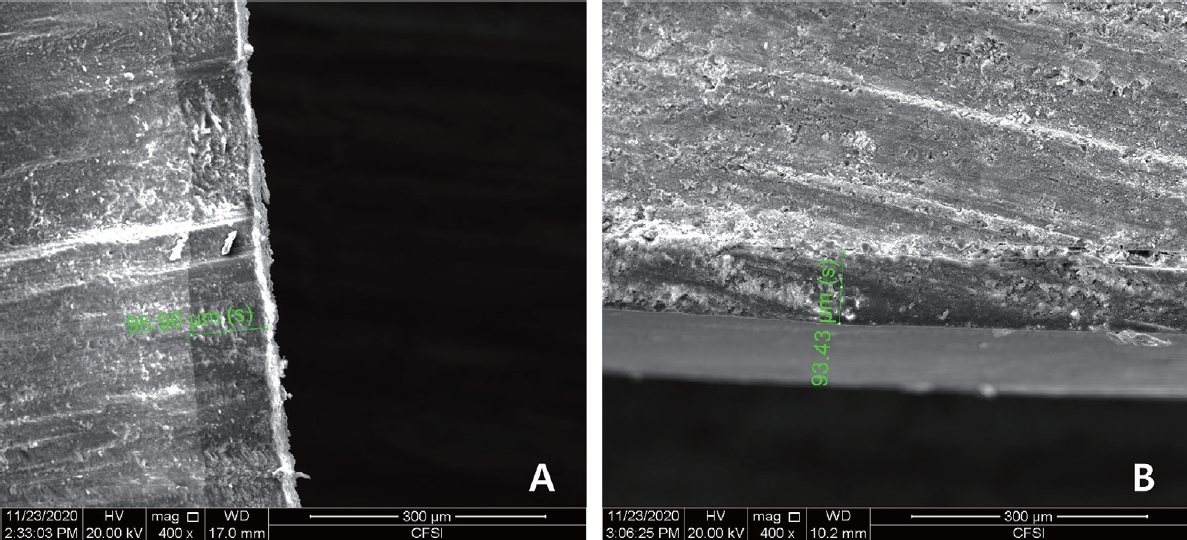1. Pitts NB, Zero DT, Ismail A,
et al. : Dental caries.
Nat Rev Dis Primers, 3:1-16, 2017.

2. Rekow ED, Bayne SC, Carvalho RM, Steele J : What constitutes an ideal dental restorative material.
Adv Dent Res, 25:18-23, 2013.


3. Askar H, Tu Y, Schwendicke F,
et al. : Risk of caries adjacent to different restoration materials: systematic review of in situ studies.
J Dent, 56:1-10, 2017.


4. Pereira-Cenci T, Cenci MS, Fedorowicz Z, Azevedo M : Antibacterial agents in composite restorations for the prevention of dental caries.
Cochrane Database Syst Rev, 12:CD007819, 2013.

5. Itota T, AlNaimi OT, McCabe JF,
et al. : Fluoride release from aged resin composites containing fluoridated glass filler.
Dent Mater, 21:1033-101038, 2005.


6. Cury JA, de Oliveira BH, dos Santos AP, Tenuta LM : Are fluoride releasing dental materials clinically effective on caries control.
Dent Mater, 32:323-333, 2016.


7. Quader SA, Alam MS, Al Mansur MA,
et al. : Compressive strength, fluoride release and recharge of giomer. 2:28-37, 2012.

8. Sujith R, Yadav TG, Sharma A,
et al. : Comparative Evaluation of Mechanical and Microleakage Properties of Cention-N, Composite, and Glass Ionomer Cement Restorative Materials.
J Contemp Dent Pract, 21:691-695, 2020.


9. Wiegand A, Buchalla W, Attin T : Review on fluoride-releasing restorative materials-fluoride release and uptake characteristics, antibacterial activity and influence on caries formation.
Dent Mater, 23:343-362, 2007.


10. Mousavinasab SM, Meyers I : Fluoride release by glass ionomer cements, compomer and giomer.
Dent Res J (Isfahan), 6:75-81, 2009.


11. Dhull K, Nandlal B : Effect of low-concentration daily topical fluoride application on fluoride release of giomer and compomer: an in vitro study.
J Indian Soc Pedod Prev Dent, 29:39-45, 2011.


12. Gupta N, Jaiswal S, Bansal P,
et al. : Comparison of fluoride ion release and alkalizing potential of a new bulk-fill alkasite.
J Conserv Dent, 22:296-299, 2019.



13. Iftikhar N, Devashish BS, Singh R,
et al. : A Comparative Evaluation of Mechanical Properties of Four Different Restorative Materials: An In Vitro Study.
Int J Clin Pediatr Dent, 12:47-49, 2019.



14. Kini A, Shetty S, Bhat R, Shetty P : Microleakage Evaluation of an Alkasite Restorative Material: An In Vitro Dye Penetration Study.
J Contemp Dent Pract, 20:1315-1318, 2019.


15. Hattab FN, Amin WM : Fluoride release from glass ionomer restorative materials and the effects of surface coating.
Biomaterials, 22:1449-1458, 2001.


16. Francois P, Fouquet V, Attal JP, Dursun E : Commercially Available Fluoride-Releasing Restorative Materials: A Review and a Proposal for Classification.
Materials (Basel), 13:2313, 2020.



17. Singh H, Rashmi S, Pai S, Kini S : Comparative Evaluation of Fluoride Release From Two Different Glass Ionomer Cement and a Novel Alkasite Restorative Material-An in Vitro Study.
Pesqui Bras Odontopediatria Clin Integr, 20:e5209. 2020.

18. Gonulol N, Ozer S, Sen Tunc : Water sorption, solubility, and color stability of giomer restoratives.
J Esthet Restor Dent, 27:300-306, 2015.


19. Ortengren U, Wellendorf H, Karlsson S, Ruyter IE : Water sorption and solubility of dental composites and identification of monomers released in an aqueous environment. 28:1106-1115, 2001.

20. Chan WD, Yang L, Wan W, Rizkalla AS : Fluoride release from dental cements and composites: a mechanistic study.
Dent Mater, 22:366-373, 2006.


21. Pazinatto FB, Atta MT : Influence of differently oriented dentin surfaces and the regional variation of specimens on adhesive layer thickness and bond strength.
J Esthet Restor Dent, 20:119-128, 2008.


22. Mazzaoui S, Burrow M, Tyas M : Fluoride release from glass ionomer cements and resin composites coated with a dentin adhesive.
Dent Mater, 16:166-71, 2000.


23. Pamir T, Tezel H, Ozata F, Celik A : Fluoride release from esthetic restorative materials with and without adhesive.
Quintessence Int, 37:145-150, 2006.

24. Vercruysse C, De Maeyer E, Verbeeck R : Fluoride release of polyacid-modified composite resins with and without bonding agents.
Dent Mater, 17:354-358, 2001.


25. Tay FR, Pashley DH, Itthagarun A,
et al. : Single-step adhesives are permeable membranes.
J Dent, 30:371-382, 2002.


26. Carrilho MR, Tay FR, Pashley DH,
et al. : Membrane Permeability Properties of Dental Adhesive Films.
J Biomed Mater Res B Appl Biomater, 88:312-320, 2009.


27. Xu X, Burgess JO : Compressive strength, fluoride release and recharge of fluoride-releasing materials.
Biomaterials, 24:2451-2461, 2003.


28. Borsboom P, Mei H, Arends J : Enamel lesion formation with and without 0.12 ppm F in solution.
Caries Res, 19:396-402, 1985.


29. Buzalaf M, Pessan J, Honorio H, Ten Cate J : Mechanisms of action of fluoride for caries control.
Monogr Oral Sci, 22:97-114, 2011.


30. Ten Cate J, Damen J, Buijs M : Inhibition of dentin demineralization by fluoride in vitro.
Caries Res, 32:141-147, 1998.


31. Rai S, Kumari RA, Meena N : Comparative assessment of fluoride release and recharge through newer fluoride releasing posterior restorative materials: An in vitro study.
J Conserv Dent, 22:544-547, 2019.


32. Breshi L, Cadenaro M, Di Lenarda R,
et al. : Polymerization kinetics of dental adhesives cured with LED: correlation between extent of conversion and permeability.
Dent Mater, 23:1066-1072, 2007.


33. Hashimoto M, Tay FR, Pashley DH,
et al. : Permeability of adhesive resin films.
J Biomed Mater Res B Appl Biomater, 74:699-705, 2005.















 PDF Links
PDF Links PubReader
PubReader Full text via DOI
Full text via DOI Download Citation
Download Citation Print
Print



